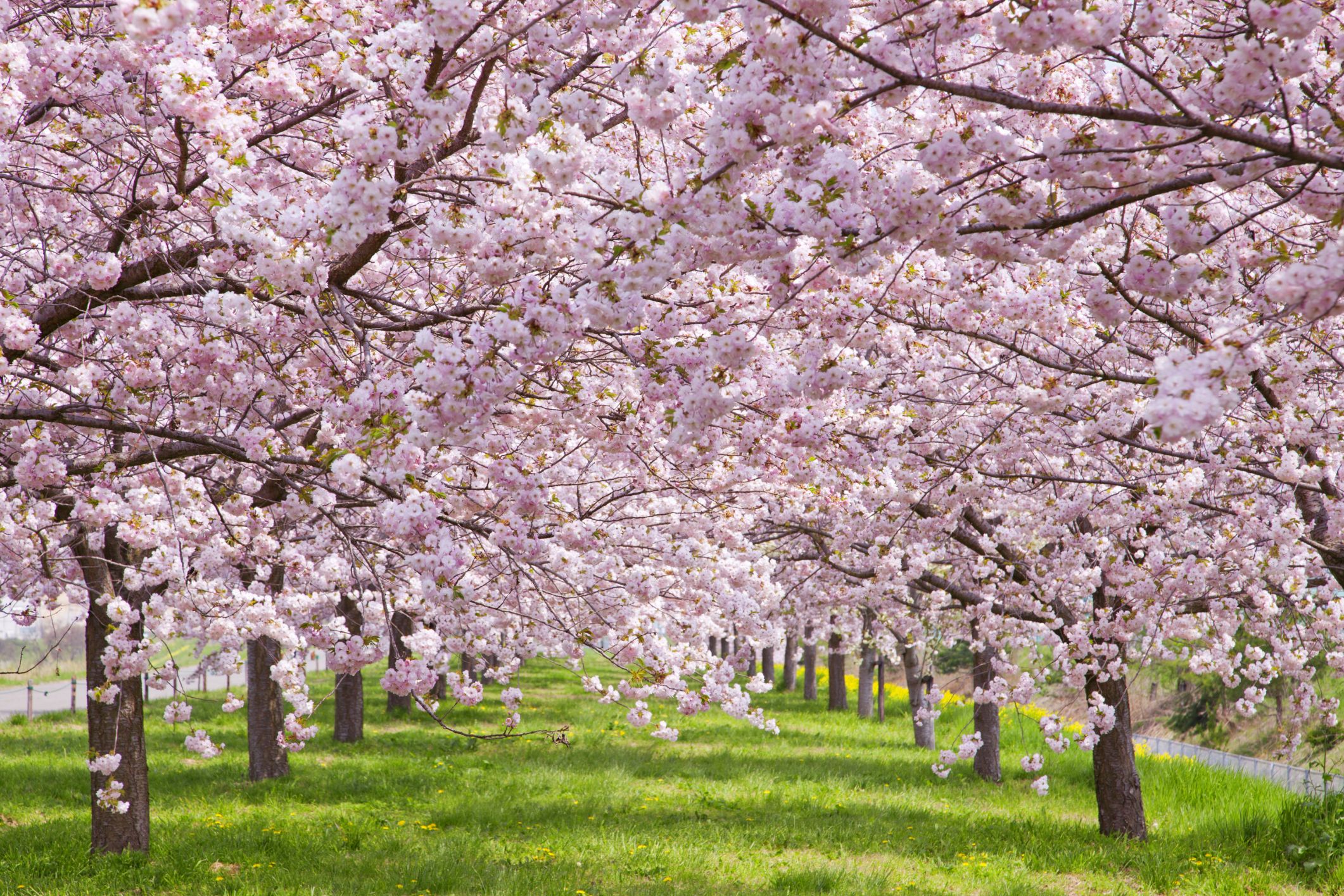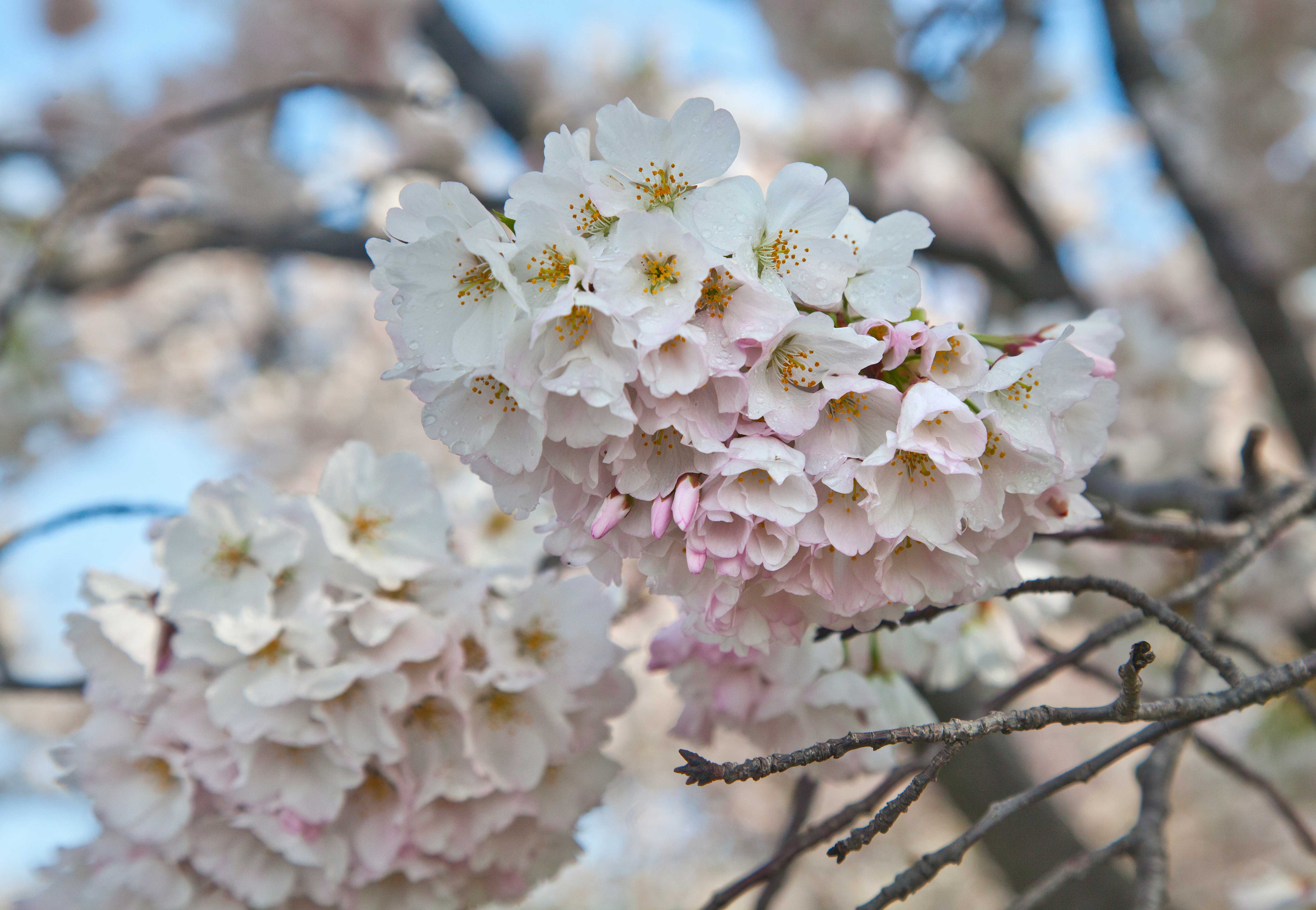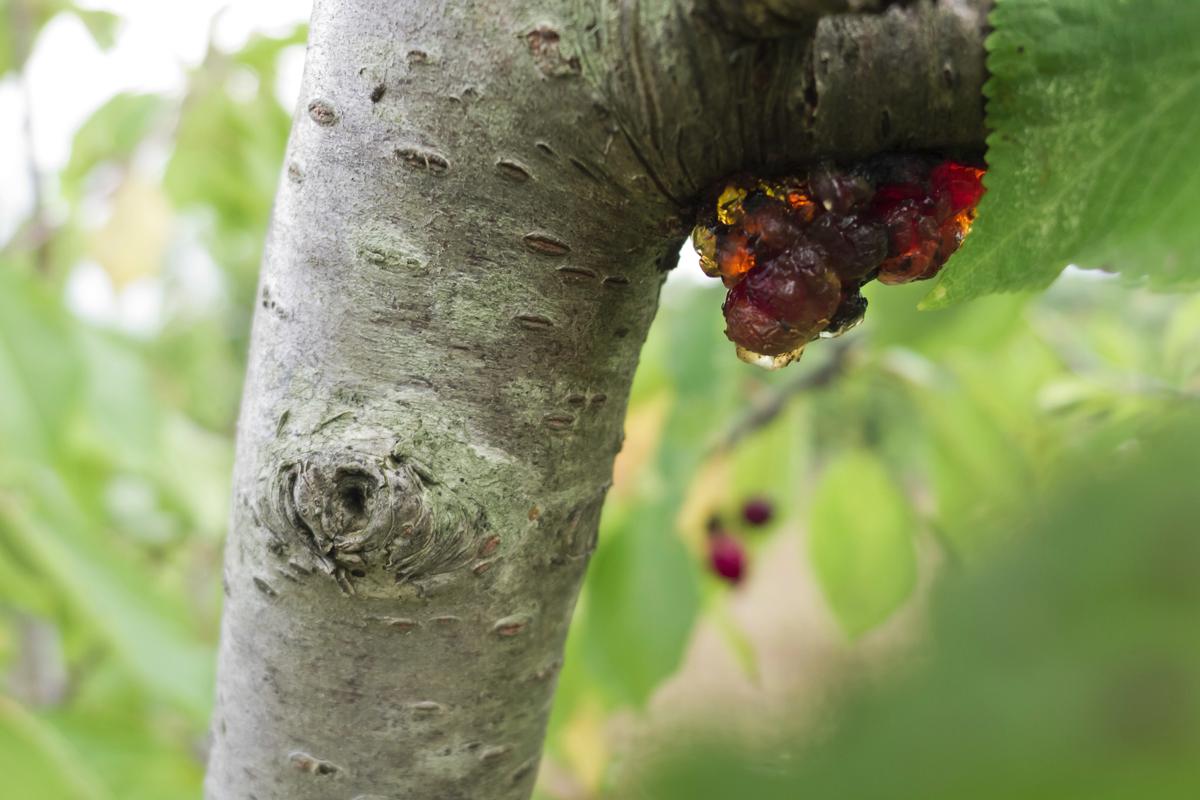Understanding the Life Cycle of a Cherry Blossom Tree
A cherry blossom tree’s life cycle is a complex process that involves various stages of growth, dormancy, and blooming. To understand why a cherry blossom tree may not be producing flowers, it’s essential to grasp the typical life cycle of these trees. Cherry blossom trees typically thrive in temperate climates with mild winters and cool, wet springs. They usually bloom in early spring, around late March to early May, depending on the specific variety and weather conditions.
During the growing season, cherry blossom trees focus their energy on developing new leaves, branches, and roots. As the weather cools in the fall, the trees prepare for dormancy by slowing down their growth and storing energy in their roots, stems, and branches. This period of dormancy is crucial for the tree’s survival, as it allows the tree to conserve energy and protect itself from harsh winter conditions.
In the spring, cherry blossom trees break dormancy and begin to produce new growth, including flowers. The blooming period is usually short-lived, lasting around 2-4 weeks, depending on the weather conditions. After the blooming period, the trees focus on developing new leaves and branches, and the cycle begins again.
Understanding the life cycle of a cherry blossom tree is crucial in identifying potential issues that may affect blooming. For instance, if a tree is not receiving sufficient sunlight or water during the growing season, it may not have the energy to produce flowers. Similarly, if a tree is not properly pruned or fertilized, it may not be able to support the growth of new flowers.
By recognizing the different stages of a cherry blossom tree’s life cycle, you can better understand why your tree may not be producing flowers and take corrective action to address any underlying issues. In the next section, we’ll explore some common reasons why a cherry blossom tree may not be blooming.
Common Reasons for a Cherry Blossom Tree Not Blooming
There are several reasons why a cherry blossom tree may not be producing flowers. Some of the most common causes include lack of sunlight, inadequate watering, poor soil quality, and insufficient fertilization. In this section, we’ll explore each of these factors in more detail and provide tips on how to address them.
Lack of sunlight is a common reason why cherry blossom trees may not be blooming. Cherry blossom trees require full sun to partial shade to produce flowers, so if your tree is not receiving enough sunlight, it may not be able to produce flowers. Consider pruning nearby trees or structures to allow more sunlight to reach your cherry blossom tree.
Inadequate watering is another common cause of a cherry blossom tree not blooming. Cherry blossom trees require consistent moisture, especially during the first year after planting. However, overwatering can also be detrimental to the tree’s health. Make sure to water your cherry blossom tree regularly, but avoid overwatering, which can lead to root rot and other problems.
Poor soil quality is also a common reason why cherry blossom trees may not be blooming. Cherry blossom trees prefer well-draining soil with a pH between 6.0 and 6.5. If your soil is heavy clay or sandy, it may not be providing the necessary nutrients for your tree to produce flowers. Consider having your soil tested and amending it with organic matter such as compost or manure.
Insufficient fertilization is another common cause of a cherry blossom tree not blooming. Cherry blossom trees require regular fertilization to produce flowers. Consider using a balanced fertilizer in the early growing season, and a bloom-boosting fertilizer in the late growing season.
Other factors that can affect a cherry blossom tree’s ability to produce flowers include pests, diseases, and environmental stressors. In the next section, we’ll explore some tips and advice on how to encourage blooming in your cherry blossom tree.
How to Encourage Blooming in Your Cherry Blossom Tree
Encouraging blooming in a cherry blossom tree requires a combination of proper care, pruning, and fertilization. In this section, we’ll provide tips and advice on how to encourage blooming in your cherry blossom tree.
Pruning is an essential part of cherry blossom tree care. Pruning helps to promote healthy growth, encourages blooming, and removes dead or diseased branches. The best time to prune a cherry blossom tree is in late winter or early spring, before new growth begins. Remove any dead or diseased branches, and cut back any branches that are crossing or rubbing against each other.
Fertilization is also crucial for encouraging blooming in cherry blossom trees. Cherry blossom trees require a balanced fertilizer that is high in phosphorus, which promotes blooming. Apply a balanced fertilizer in the early growing season, and a bloom-boosting fertilizer in the late growing season. Avoid over-fertilizing, as this can damage the tree and reduce blooming.
Pest management is also important for encouraging blooming in cherry blossom trees. Pests such as aphids, scale, and spider mites can damage the tree and reduce blooming. Use organic or chemical pest control methods to control pests, and avoid using pesticides that can harm beneficial insects.
Another way to encourage blooming in cherry blossom trees is to provide the right growing conditions. Cherry blossom trees prefer full sun to partial shade, and well-draining soil that is rich in organic matter. Avoid planting cherry blossom trees in areas with standing water or where water tends to collect.
Finally, consider using a bloom-boosting supplement to encourage blooming in your cherry blossom tree. These supplements contain a blend of nutrients and hormones that promote blooming and can be applied to the tree in the late growing season.
By following these tips and advice, you can encourage blooming in your cherry blossom tree and enjoy the beautiful flowers that these trees are known for. In the next section, we’ll discuss the importance of soil quality for cherry blossom trees.
The Importance of Soil Quality for Cherry Blossom Trees
Soil quality is a crucial factor in the health and productivity of cherry blossom trees. Cherry blossom trees prefer well-draining soil that is rich in organic matter and has a slightly acidic pH. In this section, we’ll discuss the importance of soil quality for cherry blossom trees and provide tips on how to test and amend the soil.
The ideal pH range for cherry blossom trees is between 6.0 and 6.5. Soil with a pH outside of this range can lead to nutrient deficiencies and reduced blooming. To test the pH of your soil, you can purchase a soil testing kit or send a sample to a laboratory for analysis.
In addition to pH, cherry blossom trees also require a range of essential nutrients to thrive. These include nitrogen, phosphorus, potassium, and micronutrients such as iron and magnesium. A balanced fertilizer can provide these nutrients, but it’s also important to add organic matter such as compost or manure to the soil to improve its structure and fertility.
Soil structure is also important for cherry blossom trees. Well-draining soil that is rich in organic matter can help to prevent waterlogged soil and root rot. To improve soil structure, you can add organic matter such as compost or manure, or use a soil conditioner.
If your soil is heavy clay or sandy, it may not be providing the necessary nutrients and water for your cherry blossom tree. In this case, you may need to amend the soil with organic matter or fertilizers. For example, you can add compost or manure to heavy clay soil to improve its structure and fertility, or use a fertilizer that is high in phosphorus to promote blooming.
By testing and amending the soil, you can provide your cherry blossom tree with the necessary nutrients and conditions to thrive. In the next section, we’ll discuss some cherry blossom tree varieties that are known to produce little or no flowers.
Cherry Blossom Tree Varieties That Don’t Produce Flowers
While most cherry blossom trees are known for their stunning flowers, there are some varieties that are bred specifically for their foliage or other characteristics, and may not produce flowers at all. In this section, we’ll discuss some cherry blossom tree varieties that are known to produce little or no flowers.
One such variety is the ‘Kwanzan’ cherry blossom tree. This tree is known for its stunning foliage, which is a deep green color with a reddish tint. While it may produce some flowers, they are not as prominent as those of other varieties. The ‘Kwanzan’ tree is a popular choice for landscaping and gardening, due to its unique foliage and compact growth habit.
Another variety that may not produce flowers is the ‘Yoshino’ cherry blossom tree. This tree is known for its weeping branches and stunning foliage, which is a light green color with a yellowish tint. While it may produce some flowers, they are not as prominent as those of other varieties. The ‘Yoshino’ tree is a popular choice for landscaping and gardening, due to its unique growth habit and stunning foliage.
Other varieties that may not produce flowers include the ‘Higan’ and ‘Shidare’ cherry blossom trees. These trees are known for their stunning foliage and compact growth habits, and are often used as ornamental trees in landscaping and gardening.
It’s worth noting that even if a cherry blossom tree variety is not bred specifically for its flowers, it may still produce some flowers. However, the flowers may not be as prominent or abundant as those of other varieties. If you’re looking for a cherry blossom tree that produces stunning flowers, it’s best to choose a variety that is specifically bred for its flowering characteristics.
In the next section, we’ll discuss how to care for a cherry blossom tree during the off-season, including pruning, mulching, and protecting the tree from extreme weather conditions.
How to Care for a Cherry Blossom Tree in the Off-Season
Caring for a cherry blossom tree during the off-season is crucial to ensure its health and promote blooming in the spring. In this section, we’ll provide advice on how to care for a cherry blossom tree during the off-season, including pruning, mulching, and protecting the tree from extreme weather conditions.
Pruning is an essential part of cherry blossom tree care, and it’s best done during the off-season. Prune your cherry blossom tree in late winter or early spring, before new growth begins. Remove any dead or diseased branches, and cut back any branches that are crossing or rubbing against each other.
Mulching is also important for cherry blossom trees, especially during the off-season. Mulch helps to retain moisture in the soil, suppress weeds, and regulate soil temperature. Apply a layer of organic mulch, such as wood chips or bark, around the base of your cherry blossom tree.
Protecting your cherry blossom tree from extreme weather conditions is also crucial during the off-season. Young cherry blossom trees may need protection from wind, frost, and extreme temperatures. Use a tree wrap or burlap to protect your tree from wind and frost, and apply a layer of mulch to regulate soil temperature.
Another important aspect of cherry blossom tree care during the off-season is pest management. Check your tree regularly for signs of pests, such as aphids, scale, and spider mites. Use organic or chemical pest control methods to control pests, and avoid using pesticides that can harm beneficial insects.
Finally, consider applying a dormant oil spray to your cherry blossom tree during the off-season. Dormant oil spray helps to control pests and diseases, and promotes healthy growth. Apply the spray in late winter or early spring, before new growth begins.
By following these tips, you can ensure your cherry blossom tree remains healthy and thrives during the off-season. In the next section, we’ll discuss common pests and diseases that can affect cherry blossom trees, and provide tips on how to prevent and treat these issues.
Common Pests and Diseases That Can Affect Cherry Blossom Trees
Cherry blossom trees can be susceptible to various pests and diseases that can affect their health and blooming. In this section, we’ll discuss some common pests and diseases that can affect cherry blossom trees, and provide tips on how to prevent and treat these issues.
Aphids are a common pest that can affect cherry blossom trees. These small, soft-bodied insects feed on the sap of the tree, causing curled or distorted leaves. To control aphids, use neem oil or insecticidal soap, and make sure to spray the undersides of the leaves where aphids tend to congregate.
Scale is another common pest that can affect cherry blossom trees. These small, armored insects feed on the sap of the tree, causing stunted growth and reduced blooming. To control scale, use horticultural oil or insecticidal soap, and make sure to spray the entire tree, including the trunk and branches.
Powdery mildew is a common disease that can affect cherry blossom trees. This fungal disease causes a white, powdery coating to form on the leaves, reducing photosynthesis and blooming. To control powdery mildew, use a fungicide specifically designed for cherry blossom trees, and make sure to remove any infected leaves or branches.
Other pests and diseases that can affect cherry blossom trees include spider mites, mealybugs, and root rot. To prevent these issues, make sure to provide your tree with proper care, including regular watering, fertilization, and pruning.
Regularly inspect your tree for signs of pests or diseases, and take action promptly if you notice any issues. By catching problems early, you can prevent them from becoming more serious and affecting the health and blooming of your cherry blossom tree.
In the next section, we’ll summarize the main points of the article and provide a troubleshooting guide for readers who are still struggling to get their cherry blossom tree to produce flowers.
Conclusion: Troubleshooting Your Cherry Blossom Tree’s Lack of Flowers
If your cherry blossom tree is not producing flowers, there are several potential causes to consider. In this article, we’ve discussed the typical life cycle of a cherry blossom tree, common reasons why a tree may not be blooming, and tips for encouraging blooming. We’ve also covered the importance of soil quality, cherry blossom tree varieties that don’t produce flowers, and how to care for a tree in the off-season.
To troubleshoot your cherry blossom tree’s lack of flowers, start by checking the tree’s environment and care. Ensure that the tree is receiving enough sunlight, water, and nutrients. Check the soil quality and pH levels, and amend the soil if necessary. Prune the tree regularly to promote healthy growth and blooming.
If you’ve checked all of these factors and your tree is still not producing flowers, consider the possibility that the tree is a variety that doesn’t produce flowers, or that it’s affected by pests or diseases. Take action to address any issues you find, and consider consulting with a gardening expert or arborist for further guidance.
By following the tips and advice in this article, you should be able to identify and address any issues that may be preventing your cherry blossom tree from producing flowers. With proper care and attention, your tree should be able to thrive and produce beautiful flowers for years to come.






